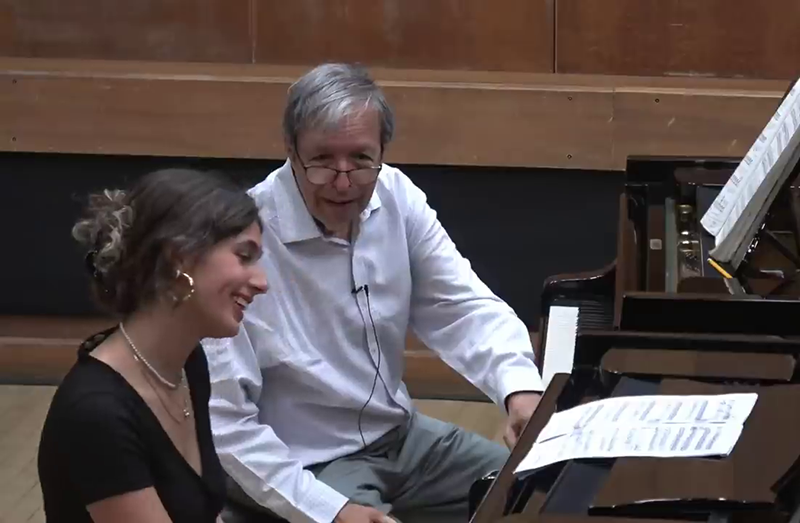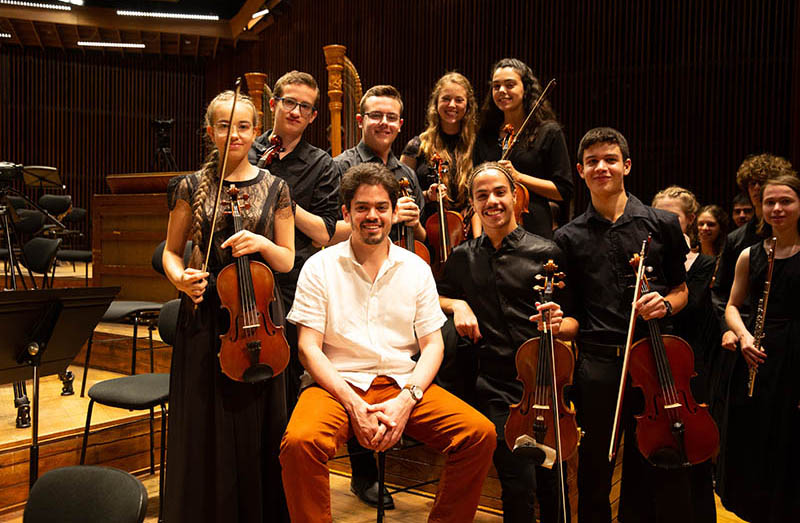Friends of the JMC
The Friends of the Jerusalem Music Center Society brings together people of action, vision and spirit, lovers of music and education. At the heart of the activitylies the notion that every gifted young woman and young man in Israel deserves an opportunity to realize their dream and fulfill their potential. This goal is achieved through the educational activities of the center which prides itself on the reputation of a world-class institution of musical excellence, headed by the great pianist Murray Perahia.
Those who join the Friends of the Centre in Israel can choose to contribute to the various activities through one of the options below, and enjoy the variety of rights associated with it. donation entitles its owner to an income tax exemption in accordance with section 46.
The music centre brings the young students together with leading international artists. These encounters take place in master classes, working in chamber ensembles, playing in an orchestra and in musical enrichment classes. During the last years, many of the great musicians of our time came to Israel to work with the young students, among them Murray Perahia, Tabea Zimmerman, Yitzhak Perlman, Miriam Fried, and in past years such legendary masters as Arthur Rubinstein, Pablo Casals, Leonard Bernstein, Yo-Yo Ma and many others.
Main donation options
Friend
3,000 NIS yearly per couple
- Guided tour of the JMC
- Regular event updates
- invitation to all concerts and events at the JMC and YIPO concerts.
Supporter
5,000 NIS yearly per couple
- An invitation to the YIPO concerts
- Personal encounters with young musicians
- invitation to all concerts and events at the JMC.
- Regular event updates
- Guided tour of the JMC
Patron
10,000 NIS yearly and up per couple
- An invitation to the YIPO concerts
- Personal encounters with young musicians
- Open invitation to all musical activities at the JMC
- Regular event updates
- Guided tour of the JMC
- A double invitaion to the YIPO concerts
More donation options
JMC friends events
Join us
Let’s Shape the future of classical music in Israel
For further information, please fill the following form
I have a responsibility to pass on to the next generation what I learned from my teachers, … like giving water to a flower.
It keeps me young and reminds me where I came from. Teaching young artists is like giving water to a flower.
Isaac Stern

Beethoven completed the trio while studying composition with Haydn (which was not so successful). The premiere was at the home of his patron, Prince Karl Likhnowski with Haydn himself present. This encounter between the great figure who was considered Europe’s greatest composers with the ambitious and grumpy young man was not successful as Haydn openly criticized the last trio of the three.
פרדיננד רייס, חברו ותלמידו של בטהובן, תיאר את האירוע: “רוב האמנים וחובבי המוזיקה הוזמנו, ובראשם היידן, שהרביעיות האחרונות שלו היו השיחה החמה בעיר”. השלישיות נוגנו, ומיד זכו לתשומת לב יוצאת דופן. גם היידן אמר עליהם הרבה דברים יפים ומחמיאים, אך המליץ לבטהובן להמתין עם פרסום השלישייה האחרונה, זו בדו מינור. בטהובן קיבל ביקורת זו באופן קשה. הוא עצמו החשיב את השלישייה השלישית לטובה בין כולם. הוא נותר עם תחושת טינה כלפיי היידן וחשד בו כי הוא מקנא. בטהובן הנמהר לא ניסה להבין את הערתו של היידן לעומק. להיידן לא הייתה שום נטייה לקנאה כלפי מלחינים צעירים מוכשרים, ולראיה מערכת היחסים הנפלאה שהייתה לו עם מוצרט. היידן כנראה החשיב את היצירה נועזת מאד וסבר כי לא תתקבל יפה על ידי הציבור וחשב שעדיף היה לחכות מעט.
במהלך השנתיים שבין ביצוע הבכורה להוצאה לאור, תיקן בטהובן את השלישיות וארגן הופעות פרטיות רבות כדי לעודד רכישת התווים על ידי מוסיקאים מקצוענים וחובבים כאחד. המהלך היה מוצלח מאד והיצירות זכו להצלחה גדולה ויצאו לאור בהוצאה היוקרתית “ארטריה ושות”. ההצלחה הייתה גדולה כל כך שבטהובן הצליח למכור מעל 240 עותקים והרוויח די כסף לקיום לשנה תמימה. כמו כן, ההתענינות בבטהובן גדלה גם בקרב האריסטוקרטיה הוינאית מה שעתיד היה להניב לו פטרונים משמעותיים נוספים.
Szeryng , the celebrated violinist, joins the trio and conducts the class from the violinist’s chair. The lesson deals with several aspects of musical expression in general and those which may be related to Beethoven’s music performance in particular. In his characteristicsharp and articulate playing, Schering illustrates to students the ways in which the drama inherent in Beethoven’s music should be realized, in the dichotomous contrast between delicacy and tenderness and decisiveness and even savagery and violence. He tries to make them not feel afraid of “going wild” when necessary. In his work which follows the score closely, he tries to intuitively instill in students the importance of understanding the written instructions and sticking to them as a necessary step in understanding the music and reaching a correct interpretation. This form of work, when the teacher, the world-renowned musician, joins the young musicians and guides them as a partner and not just as an observer or listener from the side allows musicians an empowering and inspiring experience.






